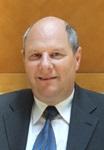 Credit: Murrstock - stock.adobe.com
Credit: Murrstock - stock.adobe.com
Copyright: ©Murrstock - stock.adobe.com
Instructors:

Christoph Brunner
President
it4Power
Christoph Brunner has graduated as electrical engineer at the Swiss Federal Institute of Technology in 1983. He is Utility Industry professional with over 30 years of industry experience with both knowledge across several areas within the Utility Industry and of technologies from the Automation Industry. He is a well-known expert on IEC 61850 as he has been involved in the development of the standard since the beginning. He is president of it4power in Switzerland, a consulting company to the power industry. As such, he has been consultant in many projects for substation automation and projects involving IEC 61850. He has worked as a project manager at ABB Switzerland Ltd in the business area Power Technology Products in Zurich / Switzerland where he was responsible for the process close communication architecture of the substation automation system. He is convenor of the working group (WG) 10 of the IEC TC57 and member of WG 17, 18 and 19 of IEC TC57. He is IEEE Fellow, member of IEEE-PES and IEEE-SA. He is active in several working groups of the IEEE-PSRC (Power Engineering Society – Relay Committee) and member of the PSRC main committee and the subcommittee H. He is guest professor at Shangdong University of technology and international advisor to the board of the UCA international users group.

Jackson Moore
Application Engineer
Triangle MicroWorks, Inc.
Jackson received B.S. degrees in Electrical Engineering and Computer Engineering from North Carolina State University and has a background in power systems engineering. Prior to joining Triangle Microworks, Jackson spent five years as a Microgrid Systems Engineer, where he designed and developed load management control systems for multi-source microgrids ranging from 1MW to 30MW. In his current role of Application Engineer, Jackson serves as a bridge between our customers and our development team, seeking to understand and solve the unique and complex challenges our clients face.